
 Raymond B.
Huey (M. A., 1969). "Ecological Relations of Sympatric
Phyllodactylus in the Sechura Desert of Peru." Ph. D., Harvard
University (1975). Miller Postdoctoral Research Fellow, Univ.
California at Berkeley; Professor, University of Washington, Seattle,
Washington. W. Frank Blair was actually Huey's supervisor, but I
was on his committee and we spent a lot of time together before he
became my research assistant and we studied the ecology of Kalahari
Desert lizards. He and I both consider our mentor-pupil relationship
as an unofficial sponsorship. Huey retired in 2013
(HueyFest)
and is now Professor and Chair Emeritus at the Department of Biology
at the University of Washington. Raymond B.
Huey (M. A., 1969). "Ecological Relations of Sympatric
Phyllodactylus in the Sechura Desert of Peru." Ph. D., Harvard
University (1975). Miller Postdoctoral Research Fellow, Univ.
California at Berkeley; Professor, University of Washington, Seattle,
Washington. W. Frank Blair was actually Huey's supervisor, but I
was on his committee and we spent a lot of time together before he
became my research assistant and we studied the ecology of Kalahari
Desert lizards. He and I both consider our mentor-pupil relationship
as an unofficial sponsorship. Huey retired in 2013
(HueyFest)
and is now Professor and Chair Emeritus at the Department of Biology
at the University of Washington.
Huey, R. B. and E. R. Pianka. 1974. Ecological character displacement in a lizard. American Zoologist 14: 1127-1136. Download pdf Huey, R. B., E. R. Pianka, M. E. Egan, and L. W. Coons. 1974. Ecological shifts in sympatry: Kalahari fossorial lizards (Typhlosaurus). Ecology 55: 304-316. Download pdf Huey, R. B. and E. R. Pianka. 1977. Natural selection for juvenile lizards mimicking noxious beetles. Science 195: 201-203. Download pdf Huey, R. B. and E. R. Pianka. 1977. Patterns of niche overlap among broadly sympatric versus narrowly sympatric Kalahari lizards (Scincidae: Mabuya). Ecology 58: 119-128. Huey, R. B. and E. R. Pianka. 1977. Seasonal variation in thermoregulatory behavior and body temperature of diurnal Kalahari lizards. Ecology 58: 1066-1075. (With an Appendix by J. A. Hoffman.) Huey, R. B. and E. R. Pianka. 1981. Ecological consequences of foraging mode. Ecology 62: 991-999. Download pdf Huey, R. B. , E. R. Pianka, and T. W. Schoener. 1983. Introduction (pp. 1-6) in R. B. Huey, E. R. Pianka, and T. W. Schoener (eds.) Lizard Ecology: Studies of a Model Organism. Harvard University Press. Huey, R. B. and E. R. Pianka. 1983. Temporal separation of activity and interspecific dietary overlap (with an Appendix by S. L. Pimm). Chapter 13 (pp. 281-296) in R. B. Huey, E. R. Pianka, and T. W. Schoener (eds.) Lizard Ecology: Studies of a Model Organism. Harvard University Press. Huey, R. B. , E. R. Pianka, and C. M. Cavalier. 1983. Ecology of Lizards in the Kalahari Desert, Africa. National Geographic Society Research Reports 16: 365-370. Huey, R. B. , E. R. Pianka, and L. J. Vitt . 2001. How often do lizards "run on empty?" Ecology 82: 1-7. Download pdf Huey, R. B. and E. R. Pianka. 2007. Lizard thermal biology: do genders differ? Amer. Natur.170: 473-478. Download pdf Huey, R. B. and E. R. Pianka. 2007. On Widely Foraging for Kalahari Lizards. Preface, pp. 1-10 in S. M. Reilly, L. D. McBrayer, and D. B. Miles, eds. "Lizard Ecology: The Evolutionary Consequences of Foraging Mode." Cambridge University Press. Read on line Huey, R. B. and E. R. Pianka. 2017. Body temperature distributions of active diurnal lizards in three deserts: skewed up or skewed down? Functional Ecology, in press. Early view. Download pdf  Richard D.
Howard (M. A., 1972). "Influence of Sexual Selection and
Interspecific Competition on Mockingbird Song." Ph. D., University of
Michigan (1977). Professor, Purdue University, Lafayette, Indiana.
Howard is retired and is now an Emeritus Professor at Purdue University.
Richard D.
Howard (M. A., 1972). "Influence of Sexual Selection and
Interspecific Competition on Mockingbird Song." Ph. D., University of
Michigan (1977). Professor, Purdue University, Lafayette, Indiana.
Howard is retired and is now an Emeritus Professor at Purdue University.
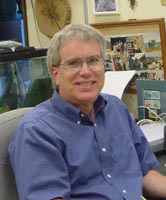 Jos. J. Schall
(Ph. D., 1976). "Comparative Ecology of Sympatric Parthenogenetic and
Bisexual Species of Cnemidophorus." Professor Emeritus,
University of Vermont, Burlington.
Jos. J. Schall
(Ph. D., 1976). "Comparative Ecology of Sympatric Parthenogenetic and
Bisexual Species of Cnemidophorus." Professor Emeritus,
University of Vermont, Burlington.
Schall, J. J. and E. R. Pianka. 1977. Species densities of reptiles and amphibians on the Iberian peninsula. Donana, Acta Vertebrata 4: 27-34. Download pdf Schall, J. J. and E. R. Pianka. 1978. Geographical trends in numbers of species. Science 201: 679-686. Download pdf Schall, J. J. and E. R. Pianka. 1980. Evolution of escape behavior diversity. American Naturalist 115: 551-566. Download pdf Pianka, E. R. and J. J. Schall. 1981. Species densities of terrestrial vertebrates in Australia. Chapter 59 (pp. 1675-1694) in A. Keast (ed.) Ecological Biogeography in Australia. D. W. Junk, The Hague, Netherlands. (Reprinted in 1984 as Chapter 1.11 (pp. 119-124) in M. Archer and G. Clayton (eds.) Vertebrate Zoogeography and Evolution in Australasia. University of New South Wales, Kensington, N. S. W., Australia.) Download pdf  Nancy T. Burley (Ph. D., 1977). "Mate
Choice and Sexual Selection in the Pigeon,
Columba livia." Assistant Professor, McGill
University, 1977-1979; Assistant Professor, University of Illinois,
Urbana, 1979-1984; Associate Professor, University of Illinois,
Urbana, 1984-1989; Professor, University of Illinois, Urbana, 1989-
1991; Professor, Univ. California, Irvine.
Nancy T. Burley (Ph. D., 1977). "Mate
Choice and Sexual Selection in the Pigeon,
Columba livia." Assistant Professor, McGill
University, 1977-1979; Assistant Professor, University of Illinois,
Urbana, 1979-1984; Associate Professor, University of Illinois,
Urbana, 1984-1989; Professor, University of Illinois, Urbana, 1989-
1991; Professor, Univ. California, Irvine.
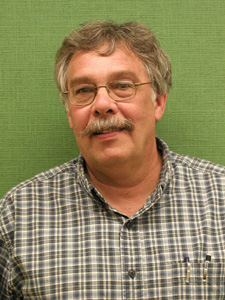 Anthony J. Joern (Ph. D.,
1977). Co-sponsored with L. R. Lawlor, "Guild and Community
Structure in Primary Consumers: Resource Utilization in Arid
Grassland Grasshopper Communities (Orthoptera: Acrididae)."
Professor, University of Nebraska, Lincoln; Professor, Kansas State
University.
Anthony J. Joern (Ph. D.,
1977). Co-sponsored with L. R. Lawlor, "Guild and Community
Structure in Primary Consumers: Resource Utilization in Arid
Grassland Grasshopper Communities (Orthoptera: Acrididae)."
Professor, University of Nebraska, Lincoln; Professor, Kansas State
University.
Winemiller, K. O. , E. R. Pianka, L. J. Vitt, and A. Joern. 2001. Food web laws or niche theory? Six independent empirical tests. American Naturalist 158: 193-199. Download pdf Mary Lee Wissink George (Ph. D., 1980). "Hummingbird foraging behavior and pollination energetics of Malvaviscus arboreus."  Duncan A. MacKay (Ph. D., 1982) Co-sponsored
with M. Singer, "Search
behavior and host plant selection by ovipositing
Euphydryas editha butterflies." Associate Professor, School of
Biological Sciences, Flinders University, Bedford Park, South
Australia.
Duncan A. MacKay (Ph. D., 1982) Co-sponsored
with M. Singer, "Search
behavior and host plant selection by ovipositing
Euphydryas editha butterflies." Associate Professor, School of
Biological Sciences, Flinders University, Bedford Park, South
Australia.
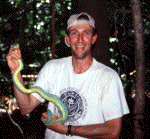 Christopher Schneider (M. S., 1987). "Comparative ecology of two
guilds of shorebirds on the south Texas coast." (Ph. D., 1993),
University of California at Berkeley. Professor, Boston University. Christopher Schneider (M. S., 1987). "Comparative ecology of two
guilds of shorebirds on the south Texas coast." (Ph. D., 1993),
University of California at Berkeley. Professor, Boston University.
 Kirk O.
Winemiller (Ph. D., 1987). Co-sponsored with C. Hubbs, "Tests of
ecomorphological and community level convergence among
neotropical stream fish assemblages." Fulbright Research Scholar to
Zambia, 1988-89. Research Associate, Oak Ridge National Laboratory
and Department of Zoology, University of Tennessee, Knoxville, 1989-
1992. George Mercer Award, Ecological Society of America, 1992. Regents
Professor, Texas A & M University.
Kirk O.
Winemiller (Ph. D., 1987). Co-sponsored with C. Hubbs, "Tests of
ecomorphological and community level convergence among
neotropical stream fish assemblages." Fulbright Research Scholar to
Zambia, 1988-89. Research Associate, Oak Ridge National Laboratory
and Department of Zoology, University of Tennessee, Knoxville, 1989-
1992. George Mercer Award, Ecological Society of America, 1992. Regents
Professor, Texas A & M University.
Winemiller, K. O. and E. R. Pianka. 1990. Organization in natural assemblages of desert lizards and tropical fishes. Ecological Monographs 60: 27-55. Download pdf. Winemiller, K. O. , E. R. Pianka, L. J. Vitt, and A. Joern. 2001. Food web laws or niche theory? Six independent empirical tests. American Naturalist 158: 193- 199. Download pdf Winemiller, K. O. , D. Fitzgerald, L. Bower, and E. R. Pianka. 2015. Functional traits, convergent evolution, and periodic tables of niches. Ecology Letters 18(8): 737Ð751. Download pdf. Pianka, E. R., L. J. Vitt, N. Pelegrin, N., D. B. Fitzgerald, and K. O. Winemiller . 2017. Towards a Periodic Table of Niches or Exploring the Lizard Niche Hypervolume. American Naturalist, in press. Press Release. Early View Download pdf  Mitchell A. Leslie (M. A., 1988). "The evolutionary omission:
Lizard displays and
evolution." Curator, Texas Memorial Museum, Austin, Texas,
1988-91. Editor, Holt, Rinehart, and Winston, Austin, Texas, 1991-97.
Science Writer, Stanford University Medical School. Currently a
freelance science writer for Science magazine, among others.
Mitchell A. Leslie (M. A., 1988). "The evolutionary omission:
Lizard displays and
evolution." Curator, Texas Memorial Museum, Austin, Texas,
1988-91. Editor, Holt, Rinehart, and Winston, Austin, Texas, 1991-97.
Science Writer, Stanford University Medical School. Currently a
freelance science writer for Science magazine, among others.
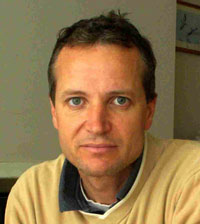 Daniel T. Haydon (Ph. D., 1992). "Stability and complexity
revisited." Postdoctoral
research associate, Oxford University, U.K.; University of British
Columbia; Centre for Tropical Veterinary Medicine, Midlothian,
Scotland; Postdoctoral researcher at the University of Guelph, Guelph, Ontario,
Canada. Professor, University of Glasgow,
Glasgow, Scotland; Zoological Society of London's Scientific Medal,
awarded to a scientist under the age of 40 years, for distinguished
work in Zoology, 2006. Fellow, Royal Society of Edinburgh, 2008--.
Director, Institute of Biodiversity Animal Health and Comparative Medicine.
Spotlight on an Alumnus
Daniel T. Haydon (Ph. D., 1992). "Stability and complexity
revisited." Postdoctoral
research associate, Oxford University, U.K.; University of British
Columbia; Centre for Tropical Veterinary Medicine, Midlothian,
Scotland; Postdoctoral researcher at the University of Guelph, Guelph, Ontario,
Canada. Professor, University of Glasgow,
Glasgow, Scotland; Zoological Society of London's Scientific Medal,
awarded to a scientist under the age of 40 years, for distinguished
work in Zoology, 2006. Fellow, Royal Society of Edinburgh, 2008--.
Director, Institute of Biodiversity Animal Health and Comparative Medicine.
Spotlight on an Alumnus
Daniel T. Haydon , R. R. Radtkey, and E. R. Pianka. 1993. Experimental Biogeography: Interactions between stochastic, historical, and ecological processes in a model archipelago. Chapter 11 (pp. 117-130) in R. E. Ricklefs and D. Schluter (eds.) Species Diversity in Ecological Communities: Historical and Geographical Perspectives. University of Chicago Press. Download pdf Daniel T. Haydon , B. I. Crother, and E. R. Pianka. 1994. New directions in biogeography? Trends in Ecology and Evolution 9: 403-406. Download pdf. Daniel T. Haydon and E. R. Pianka. 1999. Metapopulation theory, landscape models, and species diversity. EcoScience 6: 316-328. Abstract, Download pdf Daniel T. Haydon , J. K. Friar, and E. R. Pianka. 2000. Fire Driven Dynamic Habitat Mosaics in the Great Victoria Desert I: Fire Geometry. Landscape Ecology 15: 373-381. Abstract, Download pdf Daniel T. Haydon , J. K. Friar, and E. R. Pianka. 2000. Fire Driven Dynamic Habitat Mosaics in the Great Victoria Desert II: A spatial and temporal landscape model. Landscape Ecology 15: 407-423. Abstract, Download pdf  Ray R. Radtkey (Ph. D., 1993) Co-sponsored with M. Singer,
"Evaluating the role of ecological interactions in species evolution: two examples
combining historical and ecological information." Postdoctoral
Research Associate, Univ. Calif. San Diego, La Jolla.
Director of Product Development and Product Support at Nanogen, San Diego.
Currently Vice President, Product Development and Quality, Nanomix, Oakland.
Ray R. Radtkey (Ph. D., 1993) Co-sponsored with M. Singer,
"Evaluating the role of ecological interactions in species evolution: two examples
combining historical and ecological information." Postdoctoral
Research Associate, Univ. Calif. San Diego, La Jolla.
Director of Product Development and Product Support at Nanogen, San Diego.
Currently Vice President, Product Development and Quality, Nanomix, Oakland.
Daniel T. Haydon , R. R. Radtkey, and E. R. Pianka. 1993. Experimental Biogeography: Interactions between stochastic, historical, and ecological processes in a model archipelago. Chapter 11 (pp. 117-130) in R. E. Ricklefs and D. Schluter (eds.) Species Diversity in Ecological Communities: Historical and Geographical Perspectives. University of Chicago Press. Download pdf 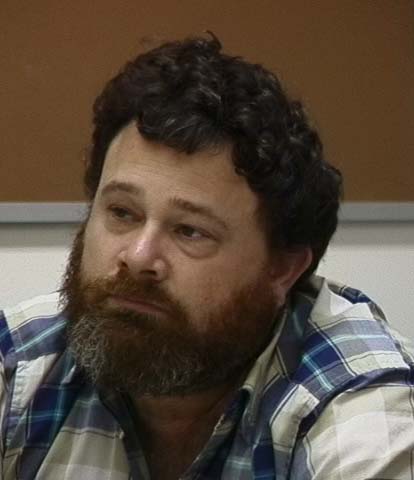 Gad Perry (Ph.D. 1995).
The Evolutionary Ecology of Lizard Foraging: A Comparative
Study." Postdoctoral Research Fellow, Ohio State University;
Postdoctoral, University of Wisconsin, Madison; Professor of
Conservation Biology at Texas Tech University, Lubbock.
Gad Perry (Ph.D. 1995).
The Evolutionary Ecology of Lizard Foraging: A Comparative
Study." Postdoctoral Research Fellow, Ohio State University;
Postdoctoral, University of Wisconsin, Madison; Professor of
Conservation Biology at Texas Tech University, Lubbock.
Gad Perry and E. R. Pianka. 1997. Animal foraging: past, present and future. Trends in Ecology and Evolution 12: 360-364. Download pdf  Monica
Swartz (Ph.D. 1997). "Behavioral and population ecology of the
army ant Eciton burchelli and ant-following birds."
Fulbright to Costa Rica, 1993-94. Taught a field course in
Amazonian Peru for Evergreen College, Olympia, Washington. Taught
a field course in the neotropical Ecuador for Boston University.
Postdoc at the Center for Conservation Biology at the University of
California, Riverside. 2002-2004;
Scientist for Coachella Valley Water District.
Director of the Wild Basin Wilderness Preserve, Associate Professor of Biology,
St. Edwards University, Austin, Texas.
Monica
Swartz (Ph.D. 1997). "Behavioral and population ecology of the
army ant Eciton burchelli and ant-following birds."
Fulbright to Costa Rica, 1993-94. Taught a field course in
Amazonian Peru for Evergreen College, Olympia, Washington. Taught
a field course in the neotropical Ecuador for Boston University.
Postdoc at the Center for Conservation Biology at the University of
California, Riverside. 2002-2004;
Scientist for Coachella Valley Water District.
Director of the Wild Basin Wilderness Preserve, Associate Professor of Biology,
St. Edwards University, Austin, Texas.
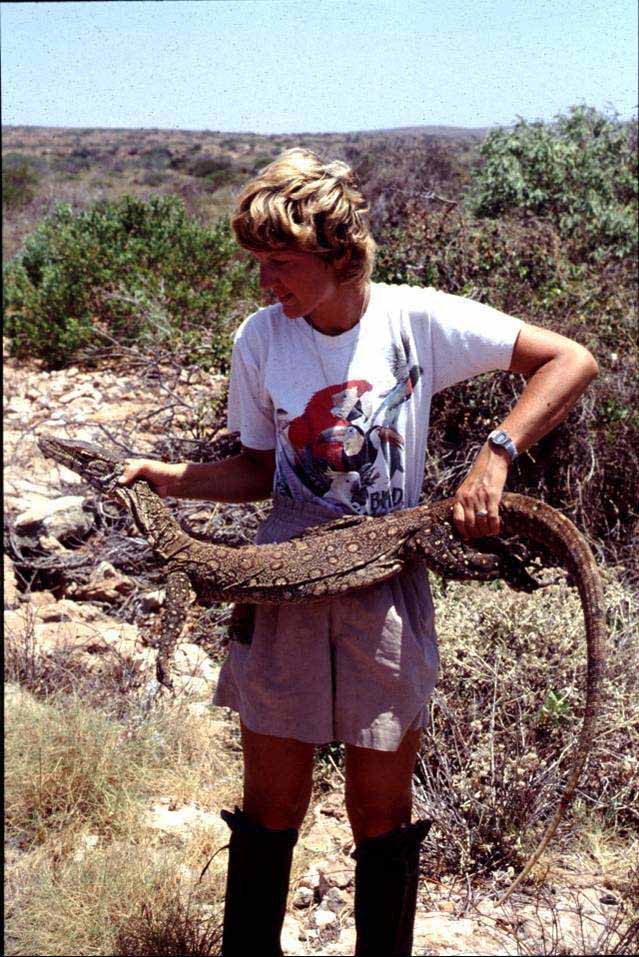 Nancy Heger (Ph.D. 2000). The impact of size on thermal efficiency:
size related costs and benefits in Varanus giganteus. Taught at
Southwest Texas University; Senior Systems Analyst at the University of Texas.
Assistant Professor, Cameron University, Lawton, Oklahoma. GIS Analyst,
Texas Parks and Wildlife Department.
Nancy Heger (Ph.D. 2000). The impact of size on thermal efficiency:
size related costs and benefits in Varanus giganteus. Taught at
Southwest Texas University; Senior Systems Analyst at the University of Texas.
Assistant Professor, Cameron University, Lawton, Oklahoma. GIS Analyst,
Texas Parks and Wildlife Department.
 L. Ramki Ramakrishnan (Ph.D. 2000). Environmental variability and ecological dynamics in spatially structured populations. Taught at the University of
Texas before returning to India. Currently population scientist and
Country Director of
'Solidarity and Action against the HIV Infection in India'
in Chennai, India.
L. Ramki Ramakrishnan (Ph.D. 2000). Environmental variability and ecological dynamics in spatially structured populations. Taught at the University of
Texas before returning to India. Currently population scientist and
Country Director of
'Solidarity and Action against the HIV Infection in India'
in Chennai, India.
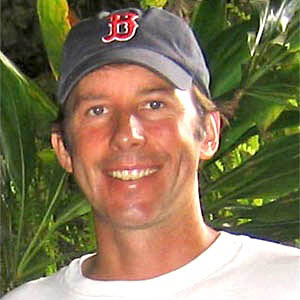 Jennings W. B. (Ph.D. 2002). Phylogeny, ecology, and the
nature of cladogenesis in
Australian pygopodid lizards. Postdoctoral, University of Washington, Seattle, and Museum of Comparative Zoology, Harvard University.
Assistant Professor, Humboldt State University.
Federal University of Rio de Janeiro, Departamento de Vertebrados, Rio de Janeiro, RJ, Brazil.
Jennings W. B. (Ph.D. 2002). Phylogeny, ecology, and the
nature of cladogenesis in
Australian pygopodid lizards. Postdoctoral, University of Washington, Seattle, and Museum of Comparative Zoology, Harvard University.
Assistant Professor, Humboldt State University.
Federal University of Rio de Janeiro, Departamento de Vertebrados, Rio de Janeiro, RJ, Brazil.
Jennings, W. B. , E. R. Pianka, and S. Donnellan. 2003. Systematics of the lizard family Pygopodidae with implications for the diversification of Australian temperate biotas. Systematic Biology 52: 757-780. Download pdf Jennings, W. B. and E. R. Pianka, E. R. 2004. Tempo and Timing of the Australian Varanus Radiation. Chapter 4 (pp. 77-87) in Pianka, E. R. and D. R. King, eds. 2004. Varanoid Lizards of the World. Indiana University Press. 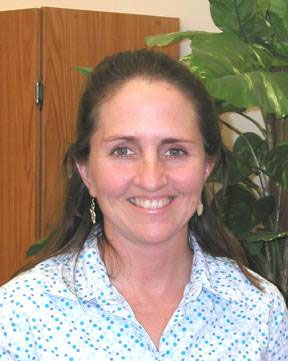 Wendy L. Hodges (Ph.D. 2002). Phrynosoma
systematics, comparative reproductive
ecology, and conservation of a Texas native. Postdoctoral at the
Center for Conservation Biology at the University of California,
Riverside, 2002;
2003-2004 NSF Bioinformatics Postdoctoral
Fellowship at University of California, Riverside.
Assistant Professor, University of Texas of the Permian Basin.
Wendy L. Hodges (Ph.D. 2002). Phrynosoma
systematics, comparative reproductive
ecology, and conservation of a Texas native. Postdoctoral at the
Center for Conservation Biology at the University of California,
Riverside, 2002;
2003-2004 NSF Bioinformatics Postdoctoral
Fellowship at University of California, Riverside.
Assistant Professor, University of Texas of the Permian Basin.
Pianka, E. R. and W. L. Hodges . 1998. Horned lizards. Reptiles 6 (6): 48-63. Translated into Finnish in 2003, published as Sarvikonnaliskot -- Phrynosoma in Herpetomania 12: 5-19. 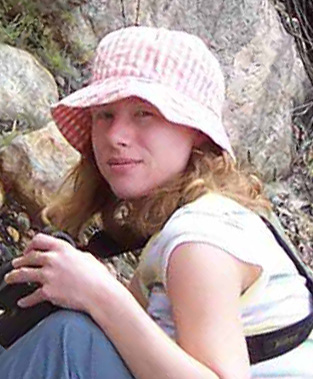
Carla Guthrie (Ph. D., 2005). Co-sponsored with Larry Gilbert. Diversity in Motion: The influence of dispersal and metacommunity spatial structure in Heliconia phyteltomata. Natural Resource Specialist, Texas Water Development Board. 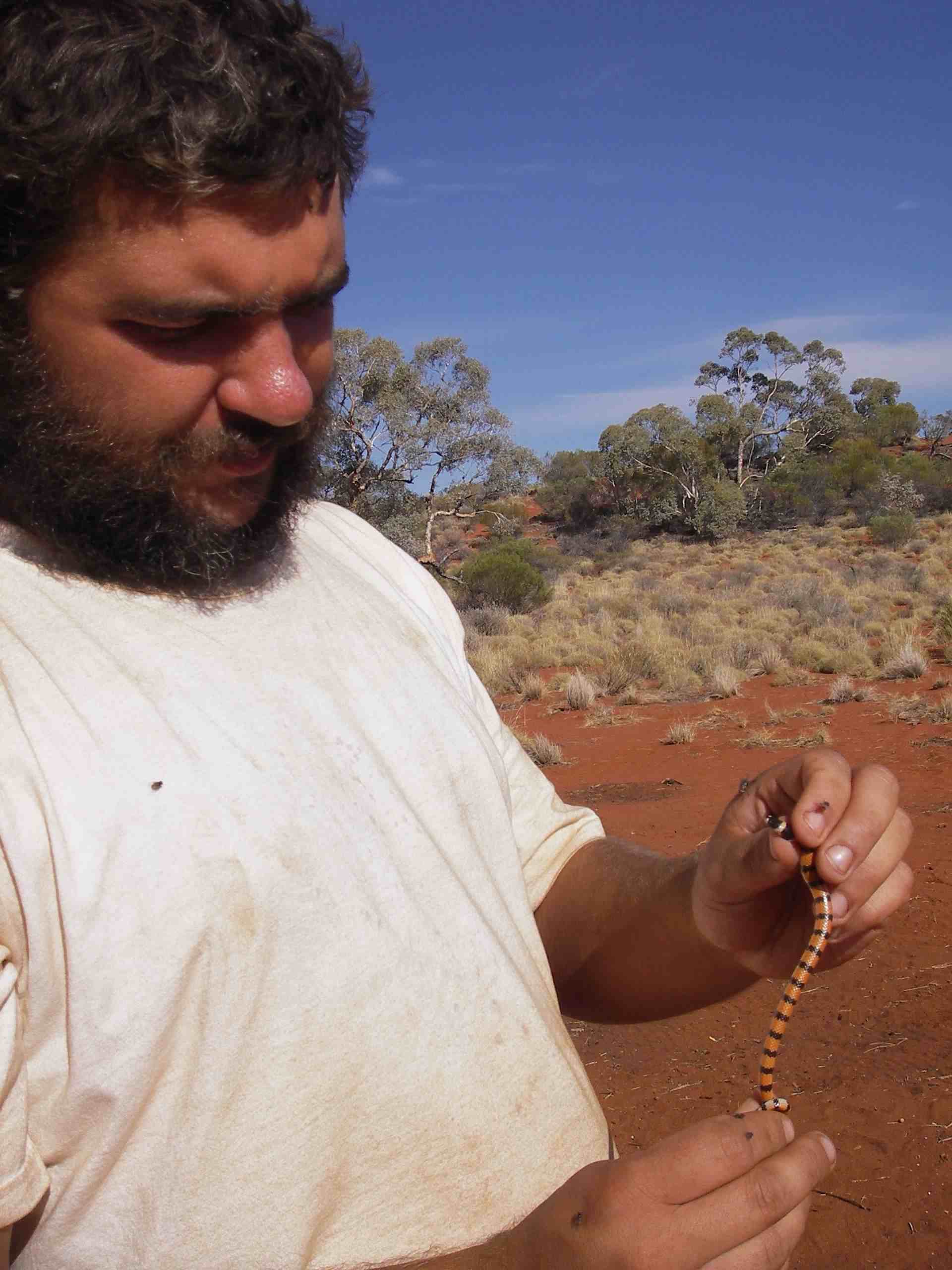 Stephen E. Goodyear (M. A., 2011). Variation in diet and habitat resource
use in desert adapted lizards in Western Australia.
Stephen E. Goodyear (M. A., 2011). Variation in diet and habitat resource
use in desert adapted lizards in Western Australia.
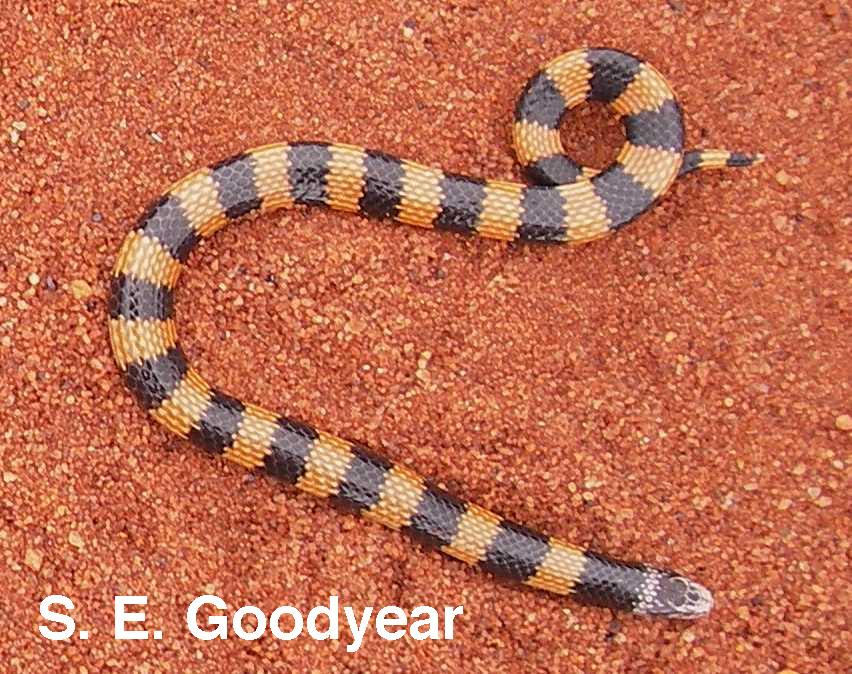
Goodyear, S. E. and E. R Pianka. 2008. Sympatric Ecology of Five Species of Fossorial Snakes (Elapidae) in Western Australia. J. Herpetology 42: 279-285. Download pdf Goodyear, S. E. and E. R. Pianka. 2011. Spatial and temporal variation in diets of sympatric lizards (genus Ctenotus) in the Great Victoria Desert, Western Australia. J. Herpetology 45: 265-271. Download pdf Pianka, E. R. and S. E. Goodyear. 2012. Lizard responses to wildfire in arid interior Australia: Long-term experimental data and commonalities with other studies. Austral Ecology 37: 1-11. Download pdf Return to Pianka lab page |